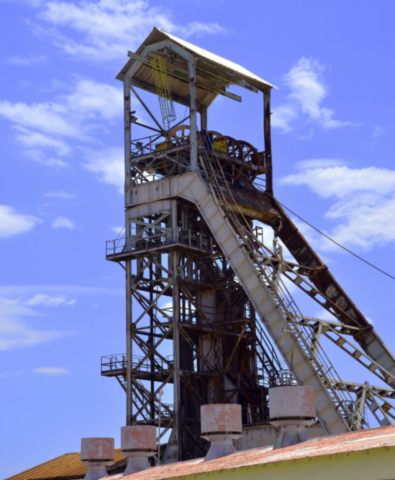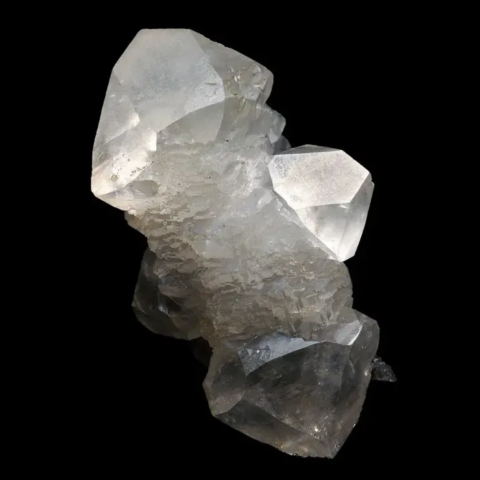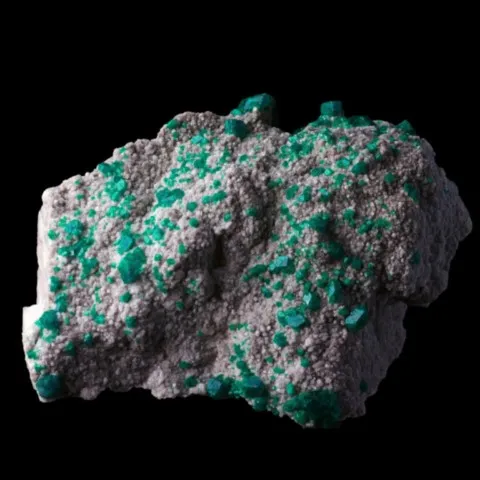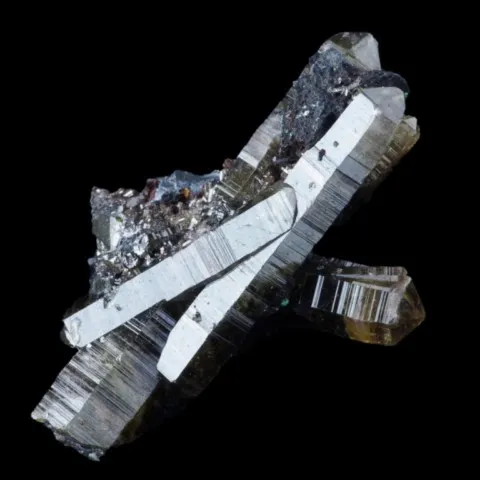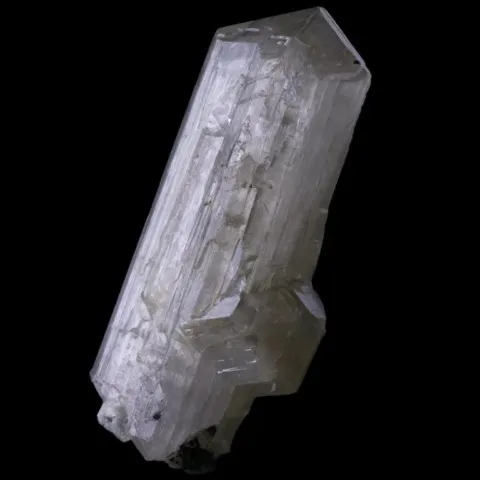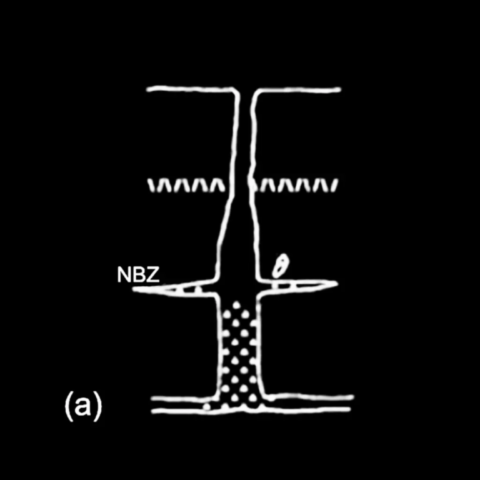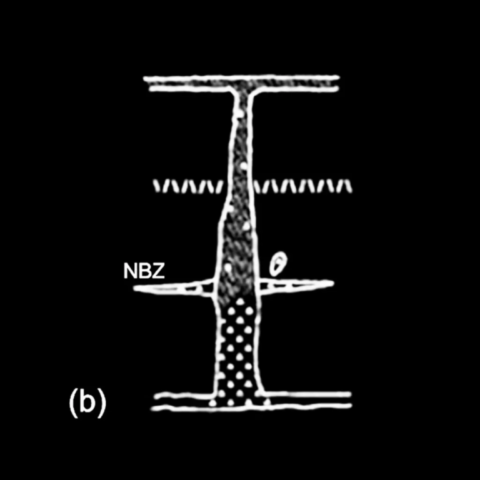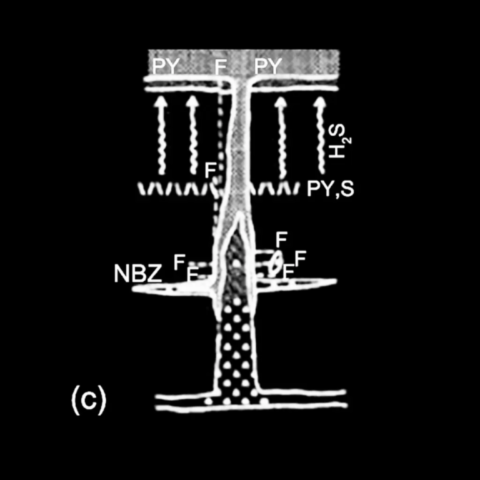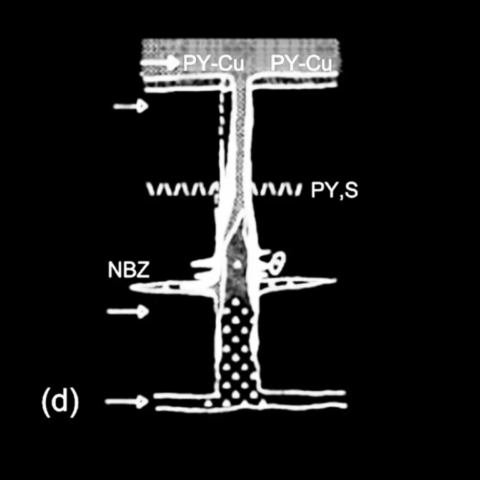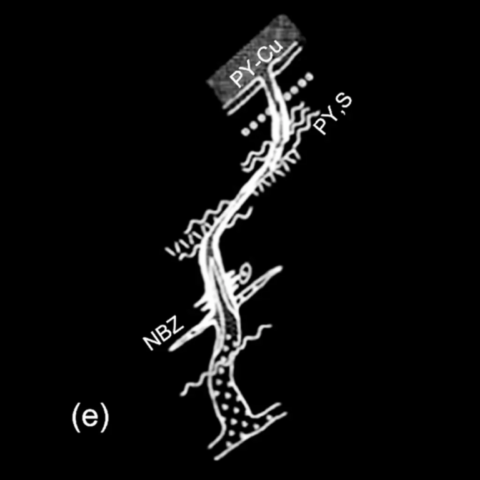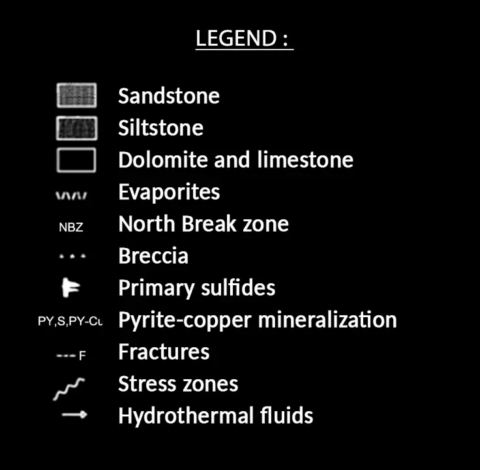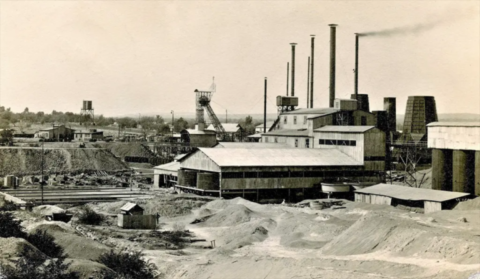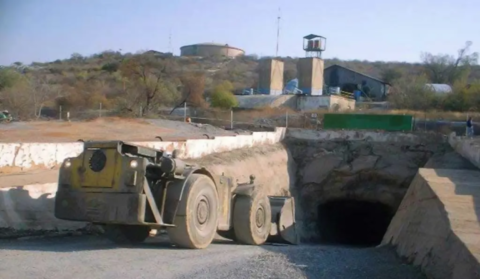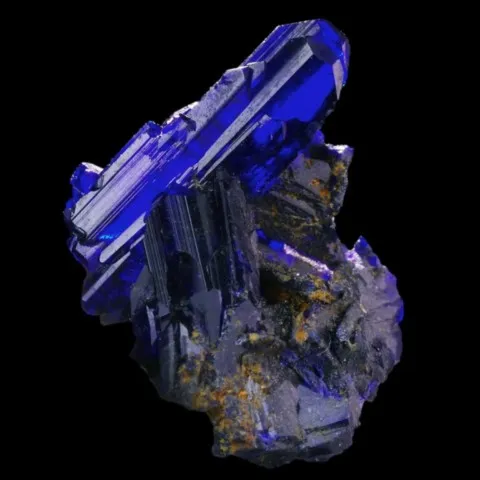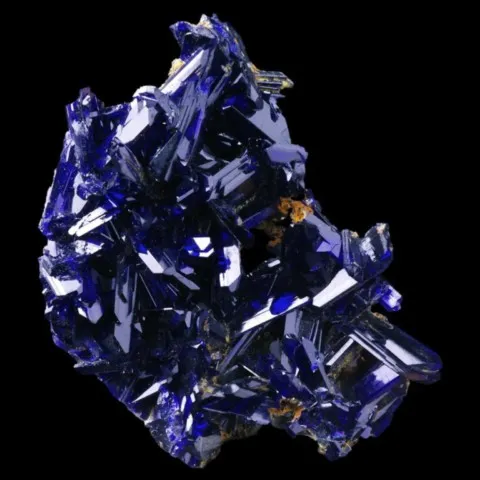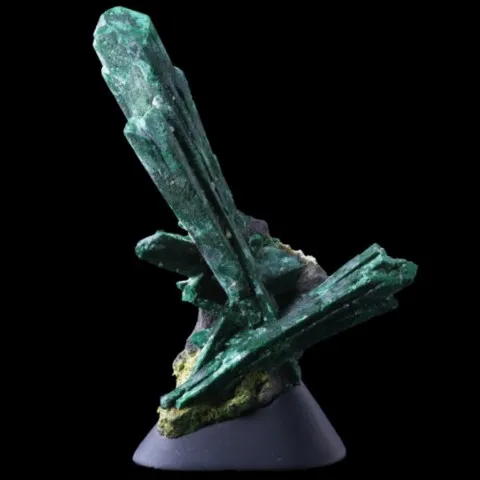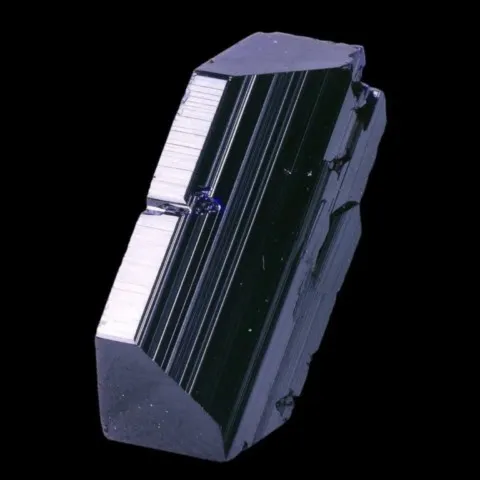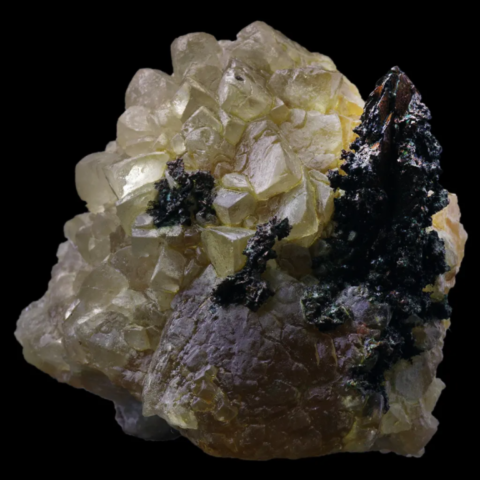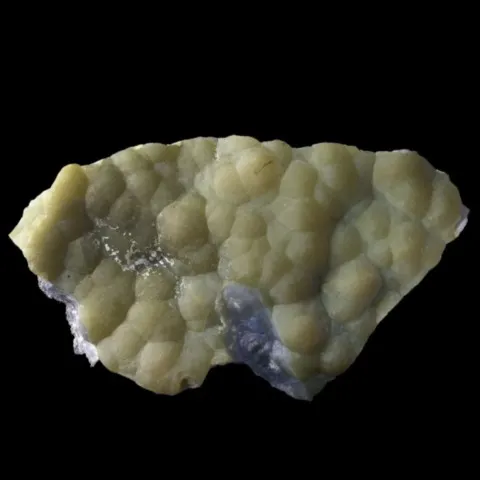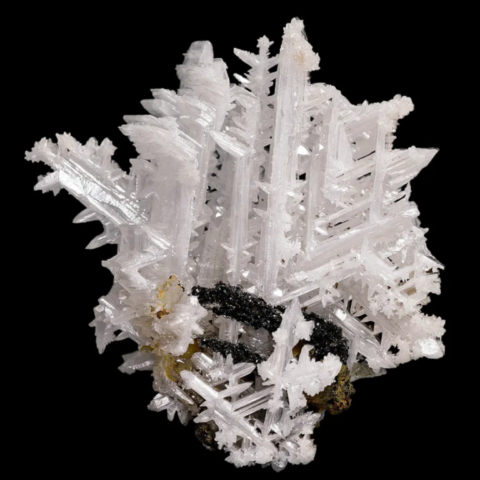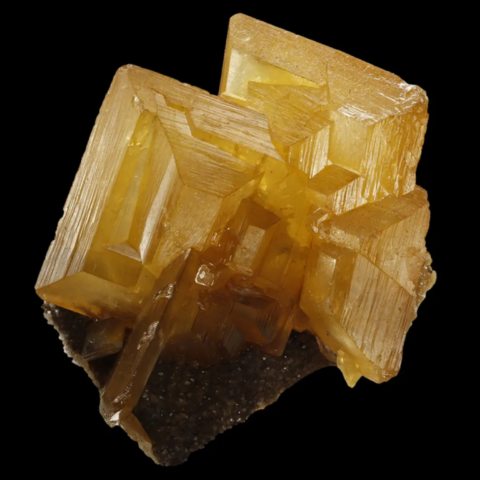Tsumeb Mine and its minerals - Namibia
The Tsumeb mine, located in the Otavi Mountains of Namibia, is one of the most remarkable polymetallic deposits in the world. It is distinguished by its exceptional mineralogical richness, with nearly 337 validated minerals, 72 of which have Tsumeb as their type-locality. Mined commercially from 1897 to 1996, it produced approximately 30 million tonnes of ore, containing 10% lead (Pb), 4.3% copper (Cu), and 3.5% zinc (Zn), as well as significant quantities of silver (Ag), germanium (Ge), cadmium (Cd), molybdenum (Mo), tin (Sn), gallium (Ga), vanadium (V), mercury (Hg), and other rare elements.
Photo : Shaft tower of the disused Tsumeb mine, Namibia (2014) © Olga Ernst
Geology and deposit formation :
The Tsumeb deposit belongs to the Damara Range, formed during the Neoproterozoic Era between 900 and 650 million years ago. It is hosted in Otavi dolomites and limestones dating back to the Precambrian period. The formation of this deposit is attributed to karstification processes, which created cavities in the dolomite as a result of the dissolution of carbonates by acidic waters.
At the end of the Proterozoic Era, a massive collapse of the roof of one of these cavities formed a void that was filled with sandy sediments from successive transgressive episodes (rising sea level). Under the effect of lithostatic pressure and hydrothermal fluids rising from the depths, these sediments recrystallized into sandstone. The Pan-African orogeny triggered intense hydrothermal circulation, transporting dissolved metals that precipitated in fractures, cavities, and carbonate breccias.
Mineralization formed in several stages. First, acidic fluids rich in copper, lead, and zinc reacted with the substrate carbonates, creating metal sulfides such as galena, sphalerite, and chalcopyrite. Subsequently, successive oxidation processes transformed these sulfides into oxides, carbonates, and silicates, producing exceptional mineralogical diversity. The superposition of these different mineralization episodes gave rise to a deposit that is unique in the world.
The deposit appears as a pipe-shaped orebody, extending over nearly 44 levels to 1,500 meters below the surface.
During the orogeny of the Pan-African Damara Belt, metal-rich fluids (Pb, Cu, Zn) circulated in the fractures and voids of the pipe. These fluids precipitated the first sulfide minerals, constituting the primary phase of the deposit's mineralization.
Subsequent tectonic episodes cause folding and thrusting of the ore pipe. These geological deformations contribute to the redistribution of mineralization and influence the formation of new secondary mineral phases through the remobilization of metallic elements.
Note :
The NBZ (North Break Zone) is a major fault zone in the Tsumeb mine, located around level 28. It played a key role in the formation and evolution of the deposit by serving as a conduit for hydrothermal fluids. This zone is characterized by intense brecciation and high permeability, which facilitated the circulation of groundwater and mineralized solutions.
The NBZ is also associated with the second major oxidation zone of the deposit, where interactions between metal-rich fluids and the host rocks led to the formation of numerous secondary minerals of exceptional rarity and quality. This zone has thus been one of the main producers of mineralogical specimens prized by collectors.
Mining history :
Mining in Tsumeb has a long and complex history. Indigenous peoples, particularly the Herero and Ovambo, had known about the presence of copper for centuries. They extracted malachite and used it to produce copper using rudimentary reduction methods. This process involved grinding the malachite into a fine powder and then mixing it with charcoal in clay kilns. When heated to high temperatures, the charcoal acted as a reducing agent, transforming the copper oxide contained in the malachite into pure metal. Once smelted, the copper was cast into stone molds or fashioned into tools and ornaments immediately after extraction. These artisanal practices continued until the arrival of European explorers in the 19th century.
In 1857, German and British missionaries identified ore samples rich in copper and silver, which quickly attracted the interest of mining companies. In 1893, the London-based South West Africa Company began the first drilling and revealed the magnitude of the deposit. Large-scale mining officially began in 1897.
The mine expanded rapidly thanks to investment by the Otavi Mining and Railway Company (OMEG), which built a railway line connecting Tsumeb to the port of Swakopmund. This infrastructure enabled the efficient export of raw ore to Europe.
In the 1940's, the mine came under the control of Tsumeb Corporation Limited (TCL), a subsidiary of Newmont Mining Corporation, which modernized the facilities. The period between 1950 and 1980 was the mine's heyday, with intensive extraction of high-quality ore. However, from the 1980's onwards, reserves began to dwindle, and profitability declined due to falling metal prices on international markets.
In 1996, after several decades of production, the mine closed permanently. However, in the 2000s, Ongopolo Mining and Processing Limited attempted to revive operations, primarily targeting mineralogical specimens for collectors. Despite some remarkable discoveries, including pockets of exceptionally high-quality azurite and dioptase, this activity remained marginal and was finally abandoned in 2008.
Archive photo : Otavi Mining Company train near Tsumeb circa 1931 © Private photo - GFDL
Exceptional mineralogy :
Tsumeb is considered a mineralogical paradise due to the high number of minerals discovered at the site, their exceptional crystalline quality, and the diversity of mineralogical associations. The deposit is distinguished by the presence of sulfides, oxides, carbonates, vanadates, arsenates, and numerous rare minerals formed by hydrothermal and supergene processes.
The primary ore consists mainly of sulfides, notably bornite, tennantite, and chalcocite, which can form masses reaching several tens of cubic meters. Galena, enargite, more abundant in the upper levels, and sphalerite are also found. Pyrite is also reported, often microcrystallized due to the relative scarcity of the iron pipe, as well as traces of germanite and renierite, both sources of germanium. Silver is present mainly in tennantite, its content of this metal increasing with depth, while gold is extremely rare and is found in chalcopyrite.
Fluctuations in groundwater levels, linked to the karstic nature of the soil, played a major role in the formation of secondary minerals. Water, circulating through the interstices and cavities of the rock, gradually dissolves certain elements of the primary ore : sphalerite first, followed by copper sulfides, while galena is practically insoluble. This dissolution precedes a progressive oxidation transforming sulfides into sulfates and arsenides, such as tennantite, into arsenates. The interaction of meteoric waters with carbonate rocks favors the formation of carbonates such as azurite, malachite, smithsonite, and cerussite. In some places, the dissolution of secondary minerals leads to the deep precipitation of native elements, particularly copper, a phenomenon called cementation. The crystallization of secondary minerals then depends on physical conditions such as temperature and chemical parameters such as pH and solution concentration.
The incredible mineralogical diversity of the Tsumeb mine is based on the existence of three successive oxidation zones :
- The first, located between the surface and the 11th level, corresponds to the water table fluctuation zone. It has yielded the most beautiful azurites, the extremely rare otavites, as well as pseudomorphs of mimetite into bayldonite and various copper arsenates.
- The second, between the 24th and 35th levels, is marked by the intersection of the pipe with a fracture, the NBZ, at the 29th level. This is the level of remarkable dioptases, twinned "snowflake" cerussites extracted from galena in the southern lenses on the 25th and 26th levels, and magnificent caramel wulfenites.
- The third zone, which extends from the 42nd to the 48th levels, was an unexpected discovery due to the unusual depth at which oxide minerals were found. This particularity is likely explained by a water influx via a karst or tectonic fracture connected to the NBZ. Rich in germanium, this zone revealed a unique and fascinating mineralogy with species such as ludlockite, leiteite, legrandite, paradamite, and the famous "Zinc Pocket" formations, characterized by oxide minerals rich in zinc and rare metals. This mineralogical pocket revealed exceptional crystallizations of smithsonite and hemimorphite, as well as rare associations including tarbuttite and parahopeite. The diversity of minerals present reflects specific geochemical conditions that favored complex reactions between hydrothermal solutions and the surrounding rocks.
Among Tsumeb's emblematic minerals, azurite and malachite, two copper carbonates, are particularly sought after by collectors. Azurite is renowned for its deep blue prismatic crystals, often pseudomorphic into intense green malachite, while dioptase, a vibrant emerald green, is one of the jewels of the deposit, formed in the copper-rich oxidized zones. Lead is also well represented with cerussite, a lead carbonate crystallizing in prisms of exceptional clarity or sometimes in spectacular reticulated groups, and wulfenite, a lead molybdate with flat crystals of caramel orange and sometimes even exceptionally blue, sometimes accompanied by mimetite. Sulphide minerals such as galena, sphalerite and chalcopyrite bear witness to the hydrothermal activity that enriched the deposit, while extremely rare secondary minerals, such as schneiderhöhnite, an iron arsenite, and söhngeite, the only mineral containing gallium in oxide form, are among the most sought-after specimens. In addition to these classic minerals, Tsumeb is the type locality for dozens of unique species, some of which are still being studied. The combination of special hydrothermal conditions and complex oxidation processes has allowed the crystallization of minerals of unparalleled diversity and purity.
Conclusion :
The Tsumeb mine remains an essential reference in the field of mineralogy. Its complex geological history, combined with specific hydrothermal conditions, has allowed the formation of an exceptional collection of minerals, both in terms of its diversity and the quality of the extracted specimens. Although industrial mining has ceased, the site continues to fascinate geologists and collectors from around the world. Tsumeb thus remains a unique model for the study of polymetallic deposits, testifying to the geological forces that have shaped one of the most remarkable mineralogical treasures on the planet.
CHETTY & FRIMMEL (2000) – "The role of evaporites in the genesis of base metal sulphide mineralisation in the Northern Platform of the Pan-African Damara Belt, Namibia: geochemical and fluid inclusion evidence from carbonate wall rock alteration", Mineralium Deposita, Vol. 35, pp. 364–376.
LAUKAMP, C. (2006) - Structural and Fluid System Evolution in the Otavi Mountain Land (Namibia) and Its Significance for the Genesis of Sulfide and Nonsulfide Mineralization. PhD Thesis, Universität Heidelberg.
PITIYA R. P. & PETER L. J. (2021) – "A Review on the Deposit Geology and Mineralization Mechanism of Tsumeb Polymetallic Deposit, Namibia", Open Access Library Journal, Vol. 8, e8121.

